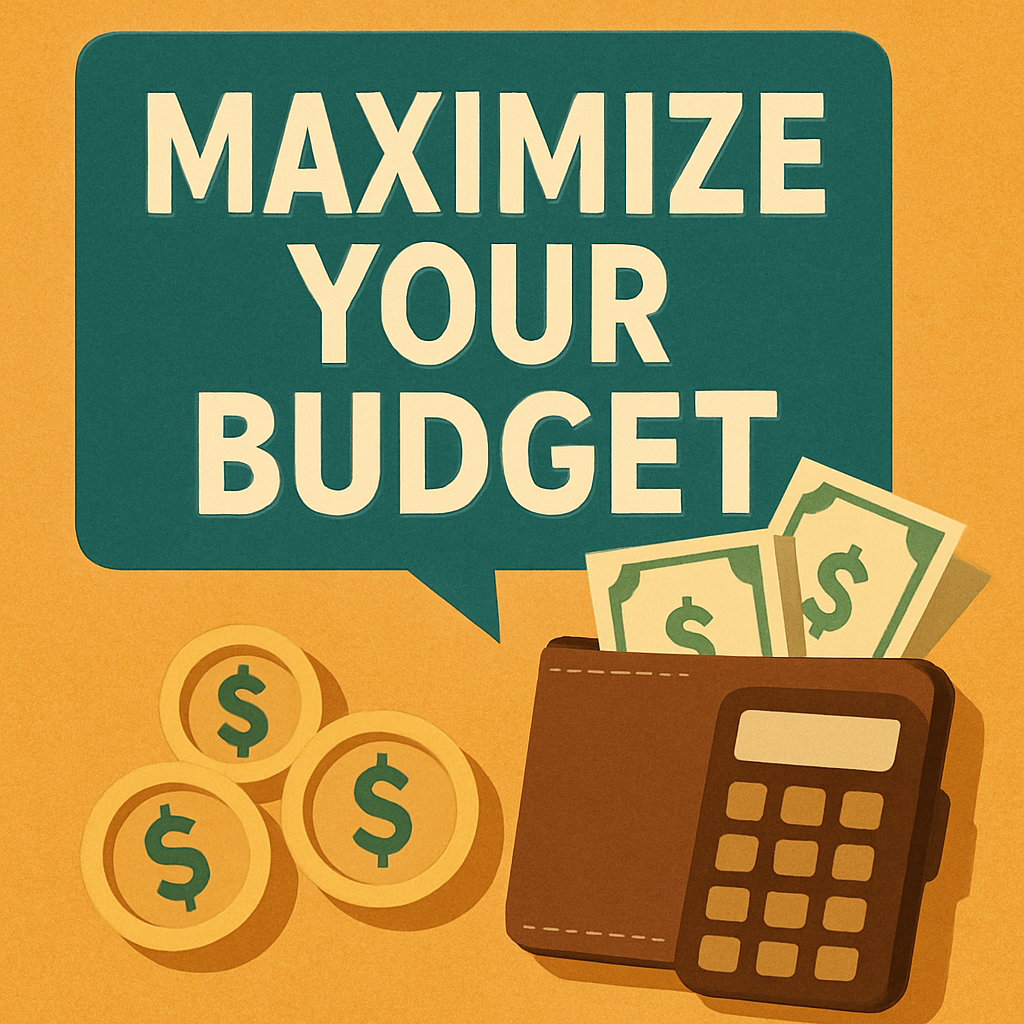One of the most effective ways to promote a new idea, product or service is to hit the conference circuit and explain the idea to a live audience. Whether you have an original product or exceptional knowledge of a popular topic, the conference circuit could be the perfect platform to get your message across to a larger audience.
In order to get a presentation slot at a conference, you need to first make an appeal to the organizers. Long in advance of such events, you must submit a conference paper in a format that conveys the essence of your presentation. Here is how to do it.
1. The Bio: Distinguish Yourself and Build Credibility
When a conference organization publishes a call for papers (CFP), anyone who submits a proposal must include a personal bio. The information covered in this bio must contain a basic rundown about yourself, such as your professional credits and educational background.
The idea here is to present the qualities about yourself that would make you qualified to give a presentation on the subject in question. Most importantly, you want to convey how your expertise makes you exceptional in your chosen field.
In five to six sentences, succinctly summarize the reasons that would make you the right choice for a speaking slot on a given topic. The sentences could run as follows:
- Sentence 1: Your place of birth and early education.
- Sentence 2: Your higher education, volunteer efforts and travels.
- Sentence 3: Highlights of your professional career, such as prestigious company positions.
- Sentence 4: Entrepreneurial ventures and notable partnerships.
- Sentence 5: Your background with the topic in question.
- Sentence 6: How your educational and professional experiences have made you an authority on the topic in question.
A bio could be written in any number of styles in the first or third person. Some people opt for a formal tone while others utilize more of a publicist's voice in their bio.
2. Title and Abstract: State Your Purpose Clearly
Conference organizations operate as businesses. As such, conferences are organized to make money for the organizations that put together such events. In much the same way you would deliver a presentation to sell a product to generate profit, the organization selects presenters in the hopes of sharing in their success.
Consequently, conference organizations must be picky about who gets a speaking slot. You have to make an impression with your paper in just a few succinct lines in order to make the cut. Since conference organizers scan hundreds of submission papers, it is crucial to grab their attention within seven to ten seconds with an abstract that covers the following key points:
- The concept you will share in your presentation.
- The reasons why attendees will value this information.
- The qualities that make your content original or exceptional.
- The reasons why the information should be experienced in a live setting.
Anything that could drum up publicity for the conference could be seen as a bonus in the eyes of organizers. For example, if your presentation includes a demo for new software that could revolutionize a core sector of the economy, your presence could potentially stir up more media interest in the conference as a whole, which could draw high attendance figures.
3. Submit Early, Submit Again
The process of organizing a conference can be hectic and cumbersome for those in charge due to the often fickle nature of presenters. Believe it or not, a lot of tapped presenters get cold feet and cancel at the last minute. Despite the fact that presenters will have already gone to great lengths to secure a slot, it is not too uncommon for a presenter to decide at the eleventh hour that he or she is just not prepared for the demands of a large audience.
In order to navigate any last-minute changes, organizers like to formalize their conference lineups early. This way, there is more time to schedule backup plans in case a presenter or two backs out of the event. Those with the best chance of inclusion in an event schedule are those who submit their papers early. Even then, late submissions are sometimes considered when replacement presenters are needed.
If you have submitted a paper early on and already been rejected, fine-tune your paper and submit it a second time. Even if the lineup is already formalized, you could score a vacant slot if someone else pulls out of the conference.
4. Follow-Up and Be Communicative
Even though there is no guaranteed way to land a spot at a conference, an established speaker has more chance of getting a spot than an unknown speaker. You do not necessarily have to be famous on the level of a Tony Robbins or Bill Gates, but it does help to at least be a known quantity among conference organizers. Therefore, it is good to leverage your social media clout as much as possible to make your name familiar within the field.
This is not to say you cannot get booked for a speaking slot if your name is largely unknown. If your paper is persuasive enough to shine among a stack of other hopefuls, you could still be among the chosen ones. Your chances could even be greater if you follow your paper with a phone call or email to the organizers. With a friendly exchange, you could possibly get them to pay closer attention to your message.
If you do get selected, it is also a good idea to communicate with the organizers to ensure that all parties are clear on the plans of the event. This way, you can establish a better relationship with conference organizations, which tend to favor speakers they can establish good communication with over those that they have to chase down.
5. Choose a Topic of Sufficient Breadth for the Conference
Different conferences cover different topic ranges. At some conferences, speakers who cover broad topics are favored because the presentations are meant to address the introductory concerns of a broad overall field. In other conferences, the opposite will apply and speakers are selected to zero in on specific facets of a narrower topic.
For a conference with broad topical concerns, organizers will favor speakers who present assessable contents that can serve as a primer to a topic. As such, you want to make the message of your pitch broad in nature and not limited in scope or tailored to a narrow niche.
For example, a presentation that covers a JavaScript function could be too narrow for a conference that addresses the broader concerns of the next Windows update. However, that same presentation could be perfectly suited for JSConf.
Basically, broad conferences are places for general topics and niche conferences are places for narrower topics. You will need to make your pitch accordingly.
6. Submit Multiple Sessions
Conferences vary in their presentation schedules and span of days. Some conferences might have 100 speakers booked across five different conference rooms over the span of 10 days. Other conferences might showcase 10 speakers back-to-back in a single conference room over two days. There are even conferences where the same speakers make two or more presentations each.
When a conference organization schedules each speaker for two presentations, the intention is usually twofold. For potential attendees, the idea is to offer an alternative option for anyone who will not be able to make the first presentation. For the organization itself, the double-scheduling of each speaker keeps the costs of the event down because fewer flights and hotel rooms need to be booked.
When you submit your paper, it is best to include the possibility of multiple sessions. If the organization favors multiple slots for each speaker, an applicant willing to make three or more presentations is likely to be favored over an applicant who is only willing to make two or fewer.
7. Build Up Your Following in Advance
To increase your chances of success when you answer call for papers by conference organizers, it is important to understand where they are coming from. You know about your own goals behind a presentation, but what are the goals of the organization that puts the conference together?
Basically, conference organizers have the same goal as you: to make money. When it comes to a conference, attendance makes the organization money — and nothing drums up attendance figures better than a lineup of popular speakers. As such, organizers favor speakers who have large followings. It is up to each applicant to prove he or she has the following to draw a large audience.
Whether you are making a pitch for your first, fifth or fiftieth conference presentation, social media can help you build your following long in advance of the event. If you have an idea, product or body of knowledge you feel merits a live showcase, you should already be using the social media omni-channel — including Facebook, Twitter, YouTube, Instagram and Pinterest — to promote your concept.
If your pitch is accepted, both you and the conference organization can mutually benefit. They get higher attendance while you get more exposure, but it is up to you to build that initial support base that could make you a more lucrative prospect in the eyes of organizers.
8. Get Feedback on Your Paper and Presentation Plans
If you are new to the conference circuit, surround yourself with conference veterans and ask for their feedback on your paper. People with experience at giving conference presentations will have unique insights into how to successfully respond to a call for papers. Some of the key questions to ask an experienced conference speaker include the following:
- Is the title compelling or do you have other suggestions?
- Does the abstract covey the purpose and arouse interest?
- Does anything about the paper seem incomplete?
- Does anything included in the paper seem extraneous?
- Does anything about the paper seem misleading?
If possible, practice your presentation in front of a small rehearsal audience comprised of conference veterans. This can help you fine-tune your approach for when the first of many big days arrive, regardless of whether you have to submit one or ten papers before your first acceptance.Even after you have given an actual conference presentation, you can still gain valuable insights through the feedback of colleagues. Regardless of your expertise, there is always room for improvement in your area of choice.
9. Know Your Audience and Address Their Needs
To succeed on the conference circuit, you must assess the needs of your audience. As you pitch your presentation idea to the conference organization, you will need to convey your ability to give your audience what they want. If the presentation is meant to be educational, you will need to illustrate your ability to educate and your credentials for doing so within the paper.
Based on the product or ideas that form the basis of your presentation, you should already know whether the point is to get people buying or thinking. If you have also put considerable time into developing an online following for your brand, you should also know the type of communication to which your audience is most responsive.
For example, if your product or idea is catered toward a younger demographic, they might respond to excitement language. An older and more professional audience will likely prefer a more formal approach. Whatever approach would be most appropriate, work it into your presentation and let the organization know you have this area covered.
10. Develop Your Speaking Skills
When you stand up before a roomful of people, the power of your voice is your most important asset. Regardless of the contents of your presentation, you must have a strong and resonant voice to deliver your message to a live audience.
A presentation can be rich in ideas yet still fail to make an impact on attendees if the presenter fails to communicate the ideas with a powerful speaking style. Therefore, it is crucial to practice speaking for a large room if you have not done so before.
Even though you will have a microphone — unless, perhaps, the conference takes place in a small meeting room — you will need to rehearse speaking in an assertive tone that carries from one end of a conference-sized space to another. Additionally, you will need to practice word enunciations to ensure your speaking is clear and understandable. If you have a habit of speaking too fast, practice speaking at a slower pace to ensure people will understand and follow what you say.
The conference circuit can open numerous doors in your career. As long as you have an idea, product or level of expertise that can draw a large audience, the conference circuit might even become your main area of focus.
Guest Blogger: Dover Downs Hotel & Casino- Dover Downs Hotel & Casino - https://www.doverdowns.com/Meet/Hotel/conference-paper-accepted






